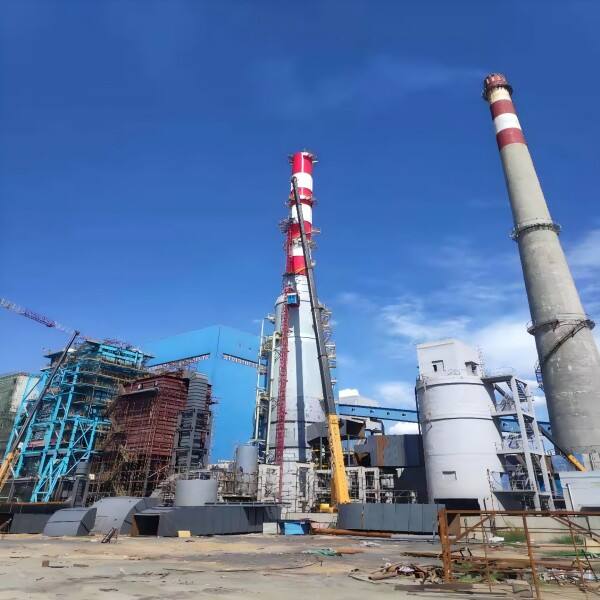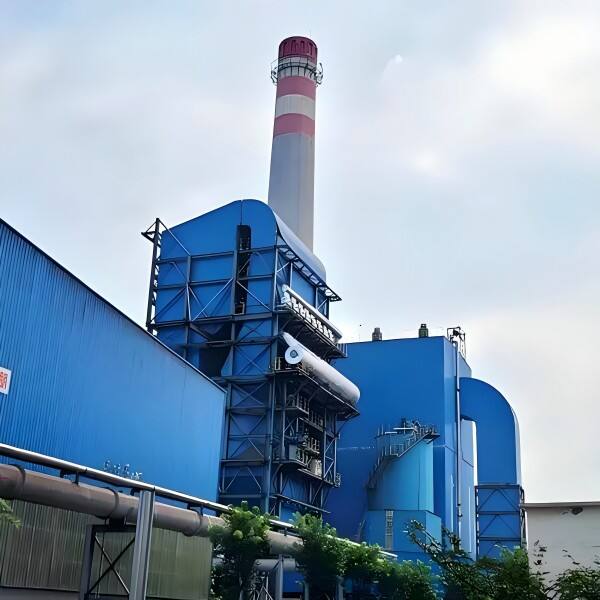The Transformative Impact of Advanced Emissions Control Technology
Selective catalytic reduction has revolutionized industrial emissions management by providing an exceptionally effective method for reducing harmful nitrogen oxides (NOx) from exhaust streams. This chemical process converts NOx into harmless nitrogen and water vapor through a precisely controlled reaction between exhaust gases and a reductant agent, typically ammonia or urea. The selective catalytic reduction system achieves remarkable pollution reduction rates of 70-95% across various applications while maintaining operational efficiency. From power plants to marine engines, selective catalytic reduction technology enables industries to meet stringent environmental regulations without compromising performance. The sophisticated design of selective catalytic reduction systems allows for targeted treatment of exhaust gases while minimizing unwanted chemical byproducts. As global emissions standards continue to tighten, selective catalytic reduction remains a preferred solution for organizations balancing environmental responsibility with economic viability.
Unmatched NOx Reduction Performance
High-Efficiency Pollution Control
Selective catalytic reduction systems deliver industry-leading NOx removal rates that consistently outperform alternative emissions control technologies. The carefully formulated catalyst promotes chemical reactions that break down nitrogen oxides at temperatures between 250-450°C, covering the typical operating range of most industrial exhaust streams. Unlike competing methods, selective catalytic reduction achieves deep NOx reduction without generating significant secondary pollutants or waste streams. The modular design of selective catalytic reduction systems allows customization to handle various gas volumes and concentrations, ensuring optimal performance across different applications. This efficiency makes selective catalytic reduction particularly valuable for operations facing strict emissions limits or located in environmentally sensitive areas. The predictable performance of well-maintained selective catalytic reduction systems gives operators confidence in meeting compliance requirements during continuous operations.
Broad Application Flexibility
The versatility of selective catalytic reduction technology enables effective NOx reduction across diverse industries and fuel types. Coal-fired power plants, gas turbines, marine diesel engines, and industrial boilers all benefit from tailored selective catalytic reduction solutions. The technology adapts to various sulfur content in fuels through specialized catalyst formulations that resist poisoning. Selective catalytic reduction systems maintain effectiveness whether processing exhaust from heavy fuel oil, natural gas, or biomass combustion. This flexibility allows organizations to implement consistent emissions control strategies across mixed equipment fleets. The scalability of selective catalytic reduction makes it equally viable for small industrial units and massive utility-scale operations. This universal applicability explains why selective catalytic reduction has become the global standard for serious NOx reduction initiatives.

Operational and Economic Advantages
Fuel Efficiency Preservation
Unlike some emissions control methods that degrade combustion efficiency, selective catalytic reduction systems impose minimal energy penalties on host equipment. The selective catalytic reduction process occurs downstream of combustion, avoiding interference with core energy generation processes. Advanced system designs minimize backpressure effects that could marginally impact overall efficiency. Many selective catalytic reduction installations actually recover waste heat from the exhaust treatment process, offsetting the small energy requirements of the system. This efficiency preservation makes selective catalytic reduction particularly attractive for energy-intensive industries where fuel costs represent a major operational expense. The economic case for selective catalytic reduction strengthens when considering avoided costs of alternative compliance strategies that might sacrifice thermal efficiency.
Long-Term Cost Effectiveness
While requiring initial capital investment, selective catalytic reduction systems prove economical over their lifespan through reduced operating and compliance costs. The technology's high reliability minimizes unplanned downtime that could disrupt production schedules. Selective catalytic reduction catalysts typically last 3-5 years in heavy-duty applications before requiring replacement, with some formulations exceeding decade-long service lives. Compared to alternative NOx control methods, selective catalytic reduction systems generally have lower operating costs once installed. The predictable maintenance requirements of selective catalytic reduction allow for accurate long-term budgeting of emissions control expenses. Many organizations find selective catalytic reduction delivers the lowest cost per ton of NOx removed when considering total lifecycle expenses. This economic efficiency complements the technology's environmental performance, creating a compelling value proposition.
Environmental Compliance Benefits
Regulatory Standard Achievement
Selective catalytic reduction provides the emissions reduction capability needed to comply with increasingly stringent global NOx regulations. The technology consistently meets standards set by the EPA, IMO, EU, and other regulatory bodies for stationary and mobile sources. Selective catalytic reduction systems can be tuned to achieve specific emissions targets, allowing operators to stay ahead of anticipated regulatory tightening. The verifiable performance of selective catalytic reduction simplifies environmental reporting and reduces compliance risk for regulated facilities. Many jurisdictions recognize selective catalytic reduction as best available technology for NOx control, making it the preferred choice for permitting processes. This regulatory acceptance gives selective catalytic reduction adopters confidence in their long-term compliance strategy as emissions standards evolve.
Secondary Environmental Benefits
Beyond NOx reduction, selective catalytic reduction systems contribute to broader environmental improvements through several mechanisms. The process slightly reduces carbon monoxide and hydrocarbon emissions through oxidation reactions on the catalyst surface. Some selective catalytic reduction formulations help control particulate matter by promoting the oxidation of associated organic compounds. The technology's energy efficiency advantages indirectly reduce greenhouse gas emissions by minimizing fuel consumption penalties. Advanced selective catalytic reduction systems can be designed to handle multiple pollutants simultaneously when integrated with other control technologies. These ancillary benefits make selective catalytic reduction a cornerstone of comprehensive environmental management systems for industrial operations. The technology's precision ensures focused treatment of target pollutants without creating new environmental concerns.
System Reliability and Durability
Robust Operational Performance
Modern selective catalytic reduction systems demonstrate exceptional reliability with availability rates exceeding 98% in well-maintained installations. The technology's relatively simple mechanical components and absence of moving parts contribute to this dependable performance. Selective catalytic reduction systems continue functioning effectively during load changes and transient operating conditions that challenge alternative emissions controls. Advanced control systems automatically adjust reagent injection rates to maintain consistent NOx reduction despite fluctuations in exhaust characteristics. This reliability makes selective catalytic reduction particularly valuable for continuous process industries where unexpected downtime carries severe financial consequences. The robust nature of selective catalytic reduction equipment ensures consistent emissions control through years of demanding service.
Catalyst Longevity Innovations
Recent advancements in selective catalytic reduction catalyst formulations have significantly extended service life while maintaining high activity levels. New substrate materials resist poisoning from sulfur, alkali metals, and other contaminants present in some exhaust streams. Manufacturers now offer catalyst management programs that optimize replacement schedules based on actual performance data rather than fixed timelines. Some selective catalytic reduction systems incorporate catalyst cleaning mechanisms that restore activity between replacement cycles. These innovations have reduced the frequency of selective catalytic reduction catalyst changes, lowering both maintenance costs and system downtime. The improved durability of modern selective catalytic reduction catalysts enhances the technology's economic and operational advantages over competing solutions.
Integration and Adaptability
Seamless System Combination
Selective catalytic reduction technology integrates effectively with other pollution control equipment to create comprehensive emissions management solutions. The technology works synergistically with electrostatic precipitators, fabric filters, and flue gas desulfurization systems in multi-pollutant control strategies. Selective catalytic reduction can be installed upstream or downstream of other treatment processes depending on specific application requirements. Many systems share common control platforms that coordinate operation across multiple emissions control technologies. This integration flexibility allows organizations to implement selective catalytic reduction within existing infrastructure without major redesigns. The ability to combine selective catalytic reduction with complementary technologies enables customized solutions for complex emissions challenges.
Retrofitting Existing Facilities
A key advantage of selective catalytic reduction is its adaptability for retrofitting onto older equipment that initially lacked advanced emissions controls. Engineers have developed space-efficient selective catalytic reduction designs that fit within the physical constraints of legacy power plants and industrial facilities. The technology's modular nature allows selective catalytic reduction systems to be sized appropriately for each application's exhaust characteristics. Retrofitted selective catalytic reduction installations often achieve the same performance levels as systems designed into new facilities. This retrofitting capability extends the operational life of existing assets while bringing them into compliance with current environmental standards. The economic viability of selective catalytic reduction retrofits has made the technology instrumental in cleaning up aging industrial infrastructure worldwide.
FAQ
How does selective catalytic reduction compare to low-NOx burners?
While low-NOx burners typically achieve 30-50% NOx reduction, selective catalytic reduction provides 70-95% reduction and works complementarily with combustion modifications.
What's the typical ammonia slip from selective catalytic reduction systems?
Well-designed selective catalytic reduction systems maintain ammonia slip below 2-5 ppm through precise dosing controls and proper catalyst management.
Can selective catalytic reduction handle high-sulfur fuels?
Special catalyst formulations and operating protocols enable selective catalytic reduction to process high-sulfur exhaust, though sulfur content affects catalyst life expectancy.
How often do selective catalytic reduction catalysts require replacement?
Catalyst life varies by application but typically ranges 24,000-80,000 operating hours, with some formulations lasting over 100,000 hours in clean gas environments.


